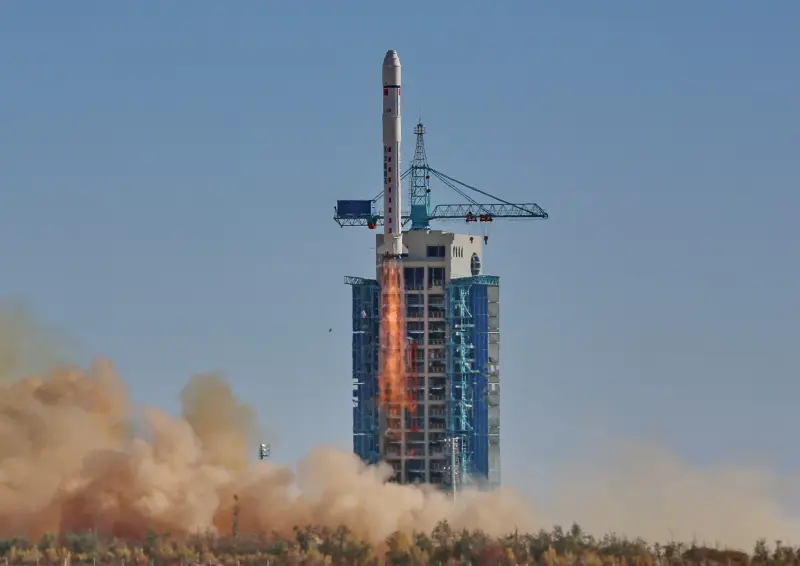Featured image credit: Xinhua
Lift Off Time/Launch Window | July 03, 2020 – 02:50:00 UTC | 10:50:00 BJT |
|---|---|
Mission Name | Jilin-1 Wideband-01B & Jilin-1 High Resolution 03D |
Launch Provider | China Aerospace Science & Technology Corporation |
Customer | Chang Guang Satellite Technology Company |
Rocket | Long March 2D |
Launch Location | LC-9, Taiyuan Satellite Launch Center, People’s Republic of China |
Payload mass | 378 kg |
Where are the satellites going? | Sun-synchronous orbit (SSO) |
Will they be attempting to recover the first stage? | No, Long March 2 rockets don’t have this capability |
Where will the first stage land? | It will crash back into the ground – somewhere in mainland China |
Will they be attempting to recover the fairings? | No |
Are these fairings new? | Yes |
This will be the: | – 53rd flight of a Long March 2D rocket – 63rd orbital launch attempt in 2021 |
Where to watch | China does not live-stream their launches at present |
What does all this mean?
China is sending Jilin-1, an Earth observation satellite, with a set of three others, to a Sun-synchronous orbit on July 03, 2021 on a Long March 2D rocket. China has several different orbital rocket types, all called Long March, but here we’ll just discuss the Long March 2.
Jilin-1 Wideband-01B
This is the second in a series of Jilin-1 satellites. Also known as Kuanfu-1 (which just means Wideband-1), it is a high resolution video imaging satellite. It can collect UHD (4K) color video imagery with a resolution better than 1 m. The satellite has “gaze observe” capabilities amongst its multiple imaging modes.
It is able to detect light over a visible range of 437 nm to 720 nm, according to the manufacturer and can image an area of ground of size 22 km by 4.5 km.

The size of the satellite is 1.23 m x 0.64 m x 2.104 m, and has a mass of approximately 230 kg.
A previous Jilin-1 Wideband satellite was launched in January 15, 2020, and went into an orbit of 477 km x 492 km, with an inclination of 97.34°.
Jilin-1 High Resolution 03D
Also known as Jilin-1 Gaofen-03D, this is the 4th instance in a series of high resolution video satellites. This mission actually features a set of three satellites. Gaofen-03A was a single demonstration satellite. Gaofen-03B consists of 6 satellites, and Gaofen-3C consists of three. Gaofen-03B and -03C satellites were all launched together on September 15, 2020, on a Long March 11 rocket.

Each satellite has a mass of 42 kg. Known as “push broom” scanning satellites, they use a line of sensing elements perpendicular to the direction of flight.
In panchromatic mode, the pixel resolution is better than 1.06 m, and in multi-spectral mode the resolution is said to be better than 4.24 m.
Long March 2
Long March 2 has several sub-variants which we’ll go over here. The Long March 2 range of rockets dates from the early 1970s. Since 1975, the oldest variant of Long March 2 for which much information is available is the LM-2C.

Active versions of Long March 2 rockets include LM-2C, LM-2D, and LM-2F. LM-2C is 40.4 m (132 ft) in length, has a 2.6 m (8.5 ft) or 3.35 m (11 ft) fairing, and can launch 2800 kg (6200 lb) to LEO. LM-2D is 41.1 m (135 ft) in length, has a 3.35 m (11 ft) wide fairing, and can launch up to 3,500 kg (7,700 lb) to LEO, or 1300 kg (2900 lb) to Sun-Synchronous Orbit of 645 km. LM-2F is 62 m (203 ft) in length, has a 3.35 m (11 ft) wide fairing, and can launch up to 8,400 kg (18,500 lb) to LEO. This launch is of a LM-2D rocket, however.
All Long March 2 variants use liquid fuel on each of their core stages and upper stages. For fuel, they use Unsymmetrical Dimethylhydrazine (UDMH), and for oxidiser they use nitrogen tetroxide (N2O4) on all main stages for all variants (apart from any solid rocket motors, that is).
Launch Profile
On a typical launch profile for the LM-2C, the core booster propels the payload and upper stage to an altitude of 47 km (29 miles) before stage 1 shutdown. The upper stage takes over shortly after stage separation, and the next major milestone is payload fairing separation at 117 km (73 miles) altitude, by which time the vehicle is 352 km (219 miles) down range.
The LM-2F rocket core stage burns for about 2.5 minutes before staging. After stage separation, the upper stage then continues to burn for an additional 5 minutes before shutting down. The LM-2F is crew-rated and features four side-mounted solid rocket boosters (as shown in the image above).





